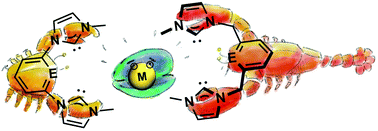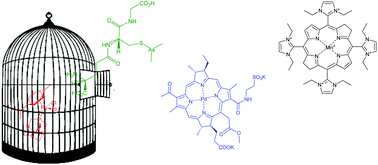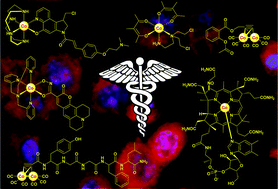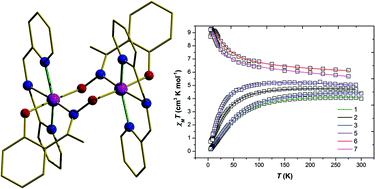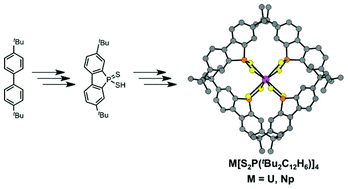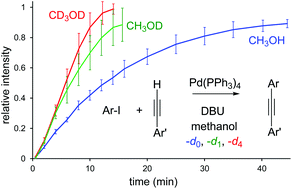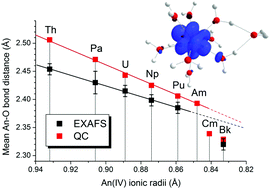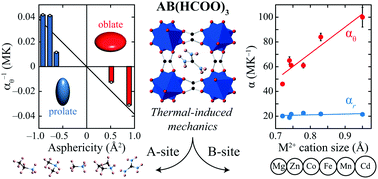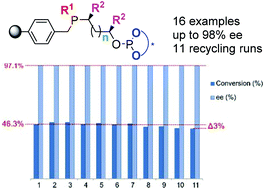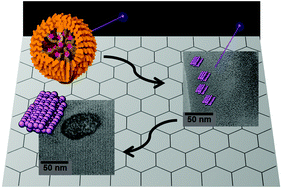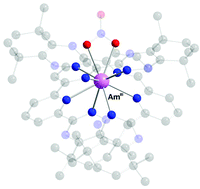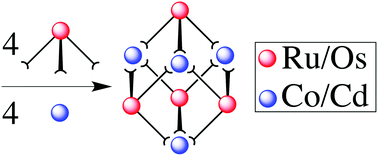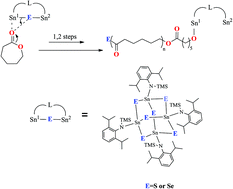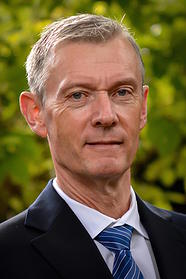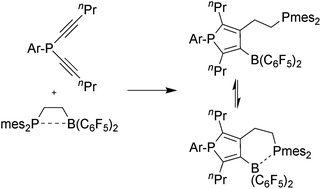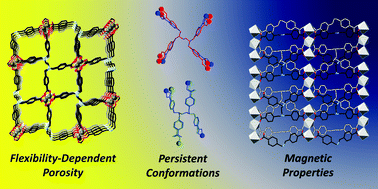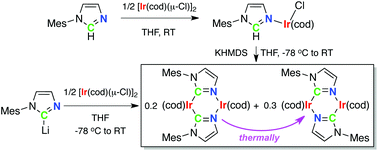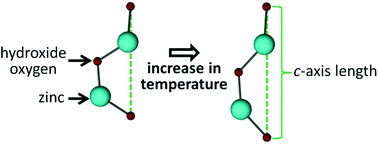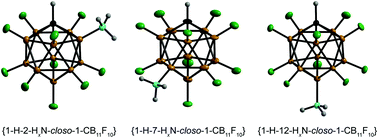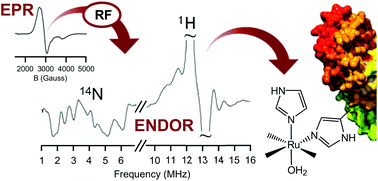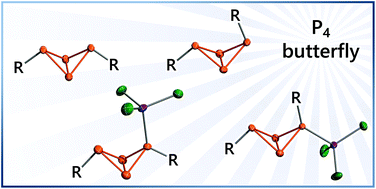Take a look at our HOT articles for 2016 which are free to access for 4 weeks and will be updated regularly so keep checking! These have also been compiled into a collection for viewing on our website.
Monoanionic bis(carbene) pincer complexes featuring cobalt(I–III) oxidation states
Abdulrahman D. Ibrahim, Kenan Tokmic, Marshall R. Brennan, Dongyoung Kim, Ellen M. Matson, Mark J. Nilges, Jeffery A. Bertke and Alison R. Fout*
Dalton Trans., 2016, Advance Article
DOI: 10.1039/C5DT04723D

Free to access until 4th July 2016
Developing nitrosocarborane chemistry
Samuel L. Powley, Louise Schaefer, Wing. Y. Man, David Ellis, Georgina M. Rosair and Alan J. Welch*
Dalton Trans., 2016, 45, 3635-3647
DOI: 10.1039/C5DT04831A
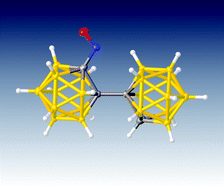
Free to access until 4th July 2016
Room temperature carbon(CO)–carbon(α) bond activation of ketones by rhodium(II) porphyrins with water
Siu Yin Lee, Shiyu Feng and Kin Shing Chan*
Dalton Trans., 2016, 45, 3522-3527
DOI: 10.1039/C5DT04149J
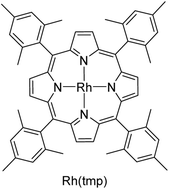
Free to access until 4th July 2016
Dinuclear ruthenium(II) complexes containing one inert metal centre and one coordinatively-labile metal centre: syntheses and biological activities
Xin Li, Kirsten Heimann, Fangfei Li, Jeffrey M. Warner, F. Richard Keene* and J. Grant Collins*
Dalton Trans., 2016, 45, 4017-4029
DOI: 10.1039/C5DT04885K

Free to access until 4th July 2016
Defects and disorder in metal organic frameworks
Anthony K. Cheetham,* Thomas D. Bennett, François-Xavier Coudert and Andrew L. Goodwin*
Dalton Trans., 2016, 45, 4113-4126
DOI: 10.1039/C5DT04392A

Free to access until 4th July 2016
Thermal degradation mechanism of triangular Ag@SiO2 nanoparticles
Mahesh K. Gangishetty, Robert W. J. Scott* and Timothy L. Kelly*
Dalton Trans., 2016, Advance Article
DOI: 10.1039/C6DT00169F
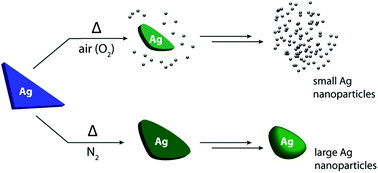
Free to access until 4th July 2016
A very peculiar family of N-heterocyclic phosphines: unusual structures and the unique reactivity of 1,3,2-diazaphospholenes
D. Gudat
Dalton Trans., 2016, 45, 5896-5907
DOI: 10.1039/C6DT00085A
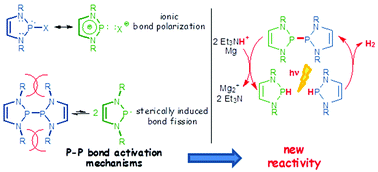
Free to access until 4th July 2016
Triphos derivatives and diphosphines as ligands in the ruthenium-catalysed alcohol amination with NH3
N. Nakagawa, E. J. Derrah, M. Schelwies, F. Rominger, O. Trapp and T. Schaub*
Dalton Trans., 2016, 45, 6856-6865
DOI: 10.1039/C5DT04870B
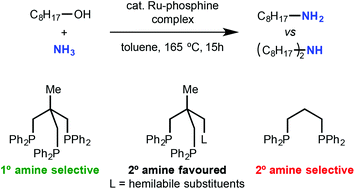
Free to access until 4th July 2016
Anionic and zwitterionic carboranyl N-heterocyclic carbene Au(I) complexes
Steven P. Fisher, Ahmad El-Hellani, Fook S. Tham and Vincent Lavallo*
Dalton Trans., 2016, Advance Article
DOI: 10.1039/C6DT00551A
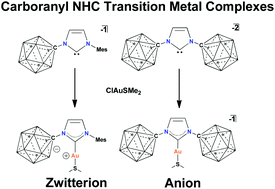
Free to access until 4th July 2016
Increasing anti-cancer activity with longer tether lengths of group 9 Cp* complexes
Stephanie. J. Lucas, Rianne M. Lord, Aida M. Basri, Simon J. Allison, Roger M. Phillips, A. John Blacker and Patrick C. McGowan*
Dalton Trans., 2016, 45, 6812-6815
DOI: 10.1039/C6DT00186F
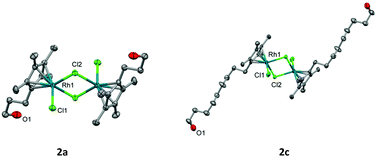
Free to access until 4th July 2016
Structurally versatile phosphine and amine donors constructed from N-heterocyclic olefin units
Nathan R. Paisley, Melanie W. Lui, Robert McDonald, Michael J. Ferguson and Eric Rivard*
Dalton Trans., 2016, Advance Article
DOI: 10.1039/C6DT00299D
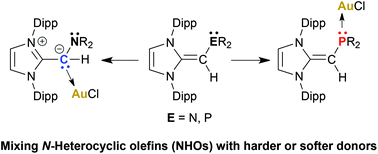
Free to access until 4th July 2016
Homoleptic and heteroleptic bis-NHC Cu(I) complexes as carbene transfer reagents
Orlando Santoro, Faïma Lazreg, David B. Cordes, Alexandra M. Z. Slawin and Catherine S. J. Cazin*
Dalton Trans., 2016, 45, 4970-4973
DOI: 10.1039/C6DT00595K

Free to access until 4th July 2016
Assessing the reactivity of sodium alkyl-magnesiates towards quinoxaline: single electron transfer (SET) vs. nucleophilic alkylation processes
Zoe Livingstone, Alberto Hernán-Gómez, Sharon E. Baillie, David R. Armstrong, Luca M. Carrella, William Clegg, Ross W. Harrington, Alan R. Kennedy, Eva Rentschler and Eva Hevia
Dalton Trans., 2016, Advance Article
DOI: 10.1039/C5DT04044B

Free to access until 18th March 2016
Water based scale-up of CPO-27 synthesis for nitric oxide delivery
Damiano Cattaneo, Stewart J. Warrender, Morven J. Duncan, Richard Castledine, Nigel Parkinson, Ian Haley and Russell E. Morris
Dalton Trans., 2016, 45, 618-629
DOI: 10.1039/C5DT03955J
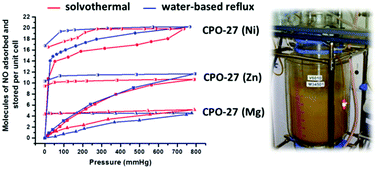
Free to access until 18th March 2016
Binding small molecules and ions to [Fe4S4Cl4]2− modulates rate of protonation of the cluster
Thaer M. M. Al-Rammahia and Richard A. Henderson
Dalton Trans., 2016, 45, 1373-1381
DOI: 10.1039/C5DT04523A

Free to access until 18th March 2016
A vacuum-annealing strategy for improving near-infrared super long persistent luminescence in Cr3+ doped zinc gallogermanate nanoparticles for bio-imaging
Jian Yang, Yuxue Liu, Duanting Yan, Hancheng Zhu, Chunguang Liu, Changshan Xu, Li Mab and Xiaojun Wang
Dalton Trans., 2016, 45, 1364-1372
DOI: 10.1039/C5DT03875H
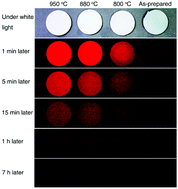
Free to access until 18th March 2016
Hydrophobic and antioxidant effects in In, Sn, and Sb based two dimensional materials
Keisuke Takahashi and Lauren Takahashi
Dalton Trans., 2016, 45, 3244-3246
DOI: 10.1039/C5DT04542H
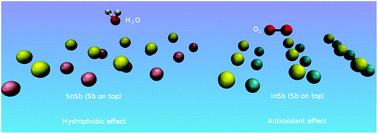
Free to access until 18th March 2016
A pH-responsive folate conjugated magnetic nanoparticle for targeted chemo-thermal therapy and MRI diagnosis
Jagriti Gupta, Jeotikanta Mohapatra, Parag Bhargava and D. Bahadur
Dalton Trans., 2016, 45, 2454-2461
DOI: 10.1039/C5DT04135J
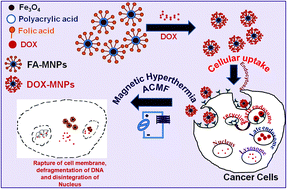
Free to access until 18th March 2016
Cobalt complexes of tetradentate, bipyridine-based macrocycles: their structures, properties and photocatalytic proton reduction
E. Joliat, S. Schnidrig, B. Probst, C. Bachmann, B. Spingler, K. K. Baldridge, F. von Rohr, A. Schilling and R. Alberto
Dalton Trans., 2016, 45, 1737-1745
DOI: 10.1039/C5DT04426J
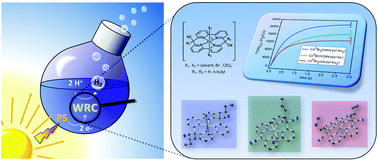
Free to access until 18th March 2016
Synthetic, structural, and computational investigations of N-alkyl benzo-2,1,3-selenadiazolium iodides and their supramolecular aggregates
Lucia M. Lee, Victoria B. Corless, Michael Tran, Hilary Jenkins, James F. Britten and Ignacio Vargas-Baca
Dalton Trans., 2016, 45, 3285-3293
DOI: 10.1039/C5DT04314J
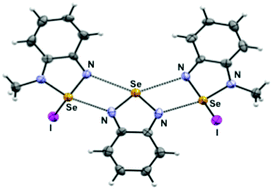
Free to access until 18th March 2016
Local structure of the metal–organic perovskite dimethylammonium manganese(II) formate
Helen D. Duncan, Martin T. Dove, David A. Keen and Anthony E. Phillips
Dalton Trans., 2016, Advance Article
DOI: 10.1039/C5DT03687A
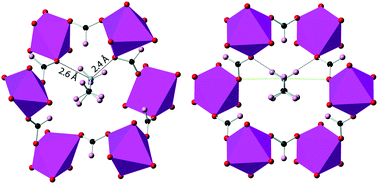
Free to access until 18th March 2016
Cyclometalated Ir(III) complexes of deprotonated N-methylbipyridinium ligands: effects of quaternised N centre position on luminescence
Benjamin J. Coe, Madeleine Helliwell, James Raftery, Sergio Sánchez, Martyn K. Peers and Nigel S. Scrutton
Dalton Trans., 2015, 44, 20392-20405
DOI: 10.1039/C5DT03753K
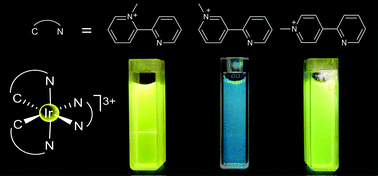
Free to access until 19th February 2016
Formation constants of copper(I) complexes with cysteine, penicillamine and glutathione: implications for copper speciation in the human eye
Lan-Chi Königsberger, Erich Königsberger, Glenn Hefter and Peter M. May
Dalton Trans., 2015, 44, 20413-20425
DOI: 10.1039/C5DT02129D
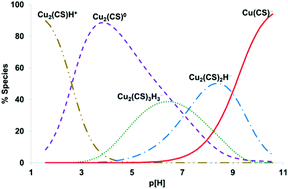
Free to access until 19th February 2016
Assembly and stabilization of {E(cyclo-P3)2} (E = Sn, Pb) as a bridging ligand spanning two triaryloxyniobium units
Alexandra Velian, Brandi M. Cossairt and Christopher C. Cummins
Dalton Trans., 2016, Advance Article
DOI: 10.1039/C5DT03383G
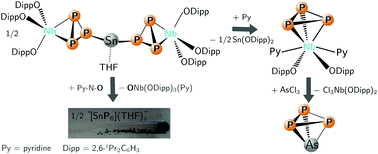
Free to access until 19th February 2016
Neutral N-donor ligand based flexible metal–organic frameworks
Biplab Manna, Aamod V. Desai and Sujit K. Ghosh
Dalton Trans., 2016, Advance Article
DOI: 10.1039/C5DT03443D
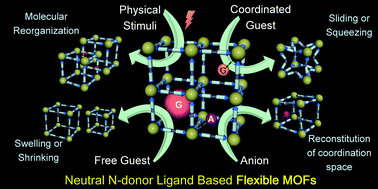
Free to access until 19th February 2016
Encapsulation of dyes in metal–organic frameworks and their tunable nonlinear optical properties
Tao Song, Jiancan Yu, Yuanjing Cui, Yu Yang and Guodong Qian
Dalton Trans., 2016, Advance Article
DOI: 10.1039/C5DT03466C
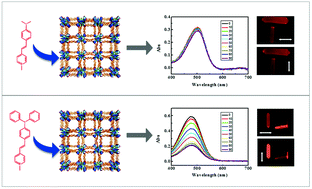
Free to access until 19th February 2016
Mixed-linker solid solutions of functionalized pillared-layer MOFs – adjusting structural flexibility, gas sorption, and thermal responsiveness
Inke Schwedler, Sebastian Henke, Michael T. Wharmby, Sneha R. Bajpe, Anthony K. Cheetham and Roland A. Fischer
Dalton Trans., 2016, Advance Article
DOI: 10.1039/C5DT03825A
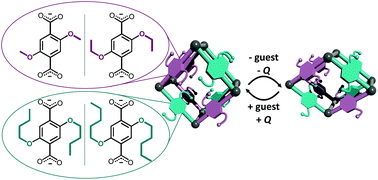
Free to access until 19th February 2016
NBu4SH provides a convenient source of HS− soluble in organic solution for H2S and anion-binding research
Matthew D. Hartle, Daniel J. Meininger, Lev N. Zakharov, Zachary J. Tonzetich and Michael D. Pluth
Dalton Trans., 2015, 44, 19782-19785
DOI: 10.1039/C5DT03355A
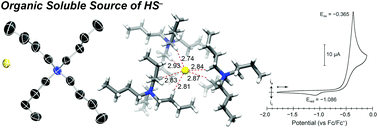
Free to access until 19th February 2016
An effect of the substituent position and metal type on the electropolymerization properties of chalcone substituted metallophthalocyanines
Dilek Çakır, Tayfun Arslan and Zekeriya Biyiklioglu
Dalton Trans., 2015, 44, 20859-20866
DOI: 10.1039/C5DT03789A
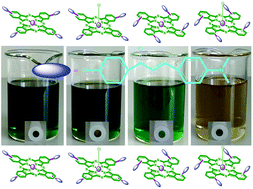
Free to access until 19th February 2016
User-friendly aerobic reductive alkylation of iridium(III) porphyrin chloride with potassium hydroxide: scope and mechanism
Huiping Zuo, Zhipeng Liu, Wu Yang, Zhikuan Zhou and Kin Shing Chan
Dalton Trans., 2015, 44, 20618-20625
DOI: 10.1039/C5DT03845F
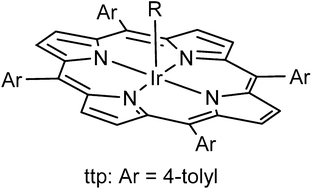
Free to access until 19th February 2016
Centrosymmetric and chiral porous thorium organic frameworks exhibiting uncommon thorium coordination environments
Yuxiang Li, Zhehui Weng, Yanlong Wang, Lanhua Chen, Daopeng Sheng, Yunhai Liu, Juan Diwu, Zhifang Chai, Thomas E. Albrecht-Schmitt and Shuao Wang
Dalton Trans., 2015, 44, 20867-20873
DOI: 10.1039/C5DT03363B
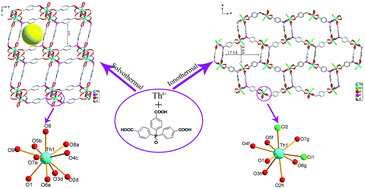
ee to access until 19th February 2016
Unsolvated Al(C6F5)3: structural features and electronic interaction with ferrocene
Jiawei Chen and Eugene Y.-X. Chen
Dalton Trans., 2016, Advance Article
DOI: 10.1039/C5DT03895B

Free to access until 19th February 2016
An element through the looking glass: exploring the Au–C, Au–H and Au–O energy landscape
Dragoş-Adrian Roşca, Joseph A. Wright and Manfred Bochmann
Dalton Trans., 2015, 44, 20785-20807
DOI: 10.1039/C5DT03930D
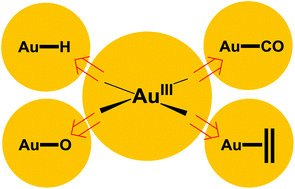
Free to access until 19th February 2016
Novel triazolium based 11th group NHCs: synthesis, characterization and cellular response mechanisms
M. Pellei, V. Gandin, M. Marinelli, A. Orsetti, F. Del Bello, C. Santini and C. Marzano
Dalton Trans., 2015, 44, 21041-21052
DOI: 10.1039/C5DT02934A
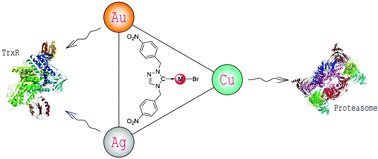
Free to access until 19th February 2016
Regioselectivity in C–H activation: reagent control in cyclometallation of 2-(1-naphthyl)-pyridine
Mikhail Kondrashov, David Provost and Ola F. Wendt
Dalton Trans., 2016, 45, 525-531
DOI: 10.1039/C5DT04068J

Free to access until 19th February 2016
A single molecule magnet to single molecule magnet transformation via a solvothermal process: Fe4Dy2 → Fe6Dy3
Sihuai Chen, Valeriu Mereacre, Christopher E. Anson and Annie K. Powell
Dalton Trans., 2016, 45, 98-106
DOI: 10.1039/C5DT03909F
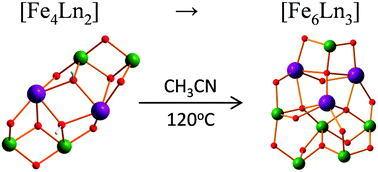
Free to access until 19th February 2016
Smallest molecular chalcogenidometalate anions of the heaviest metals: syntheses, structures, and their interconversion
G. Thiele, C. Donsbach, R. Riedel, M. Marsch, K. Harms and S. Dehnen
Dalton Trans., 2016, Advance Article
DOI: 10.1039/C5DT03996G
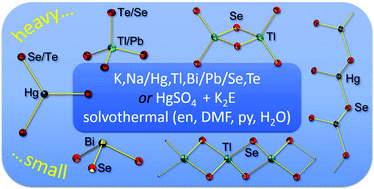
Free to access until 19th February 2016












